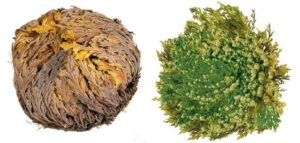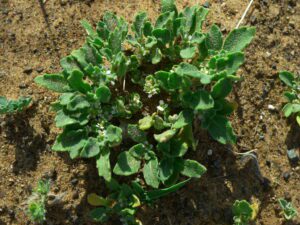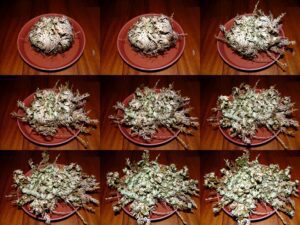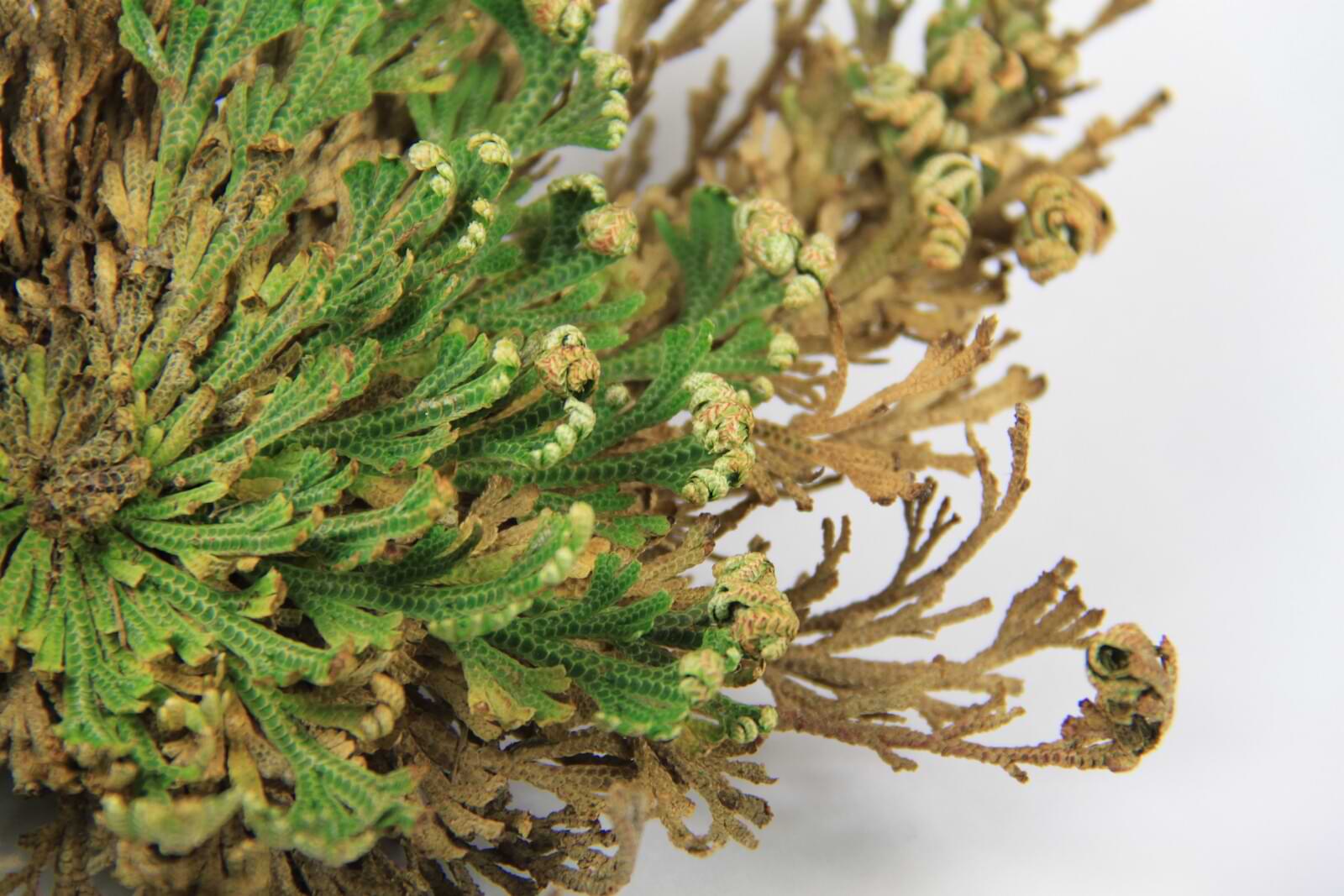The Rose of Jericho is one of the most fascinating houseplants out there. It’s incredibly easy to care for because it can dry out completely and “come back to life” with just a short soak in water.
Getting started with your own Rose of Jericho is super easy, so we’ve compiled a list of everything you need (and want) to know to become an expert!

The Ultimate Guide to Rose of Jericho: Everything You Want to Know
“Rose of Jericho” could refer to two different plants
Both plants are called resurrection plants. This nickname could also refer to about a hundred and thirty other plants with the ability to dry out and come back to life, though they belong to different families and won’t find their way into many nurseries.
The two that go by the name “Rose of Jericho” are Anastatica heirochuntica and Selaginella lepidophylla.
Anastatica heirochuntica is also called “True” Rose of Jericho. This plant hails from the Middle East (i.e. Jericho) and is less common than Selaginella lepidophylla. It’s also considered less attractive.

This plant grows little white flowers when fully hydrated, but it must actually root in soil to revive, which makes it a little harder to care for. It’s the only plant in the Anastatica genus and is a member of the mustard family.
Selaginella lepidophylla is also called “False” Rose of Jericho or dinosaur plant. This plant is a type of spike moss and is found in the Chihuahuan desert of Mexico, New Mexico, and Arizona.

This plant is easier to find than the true Rose of Jericho and is easier to care for because it doesn’t need to be planted in soil. Because it’s so much more common, most of our recommendations work best for Selaginella lepidophylla.
Rose of Jericho in history and religion
With a nickname like “resurrection plant,” it’s no wonder that Rose of Jericho holds a special place in many world religions and myths.
You can find references to these plants in literature from around the world. The scientific community has also taken an interest in this plant for its drought resistant and potentially cancer-fighting properties!
Read our guide to the history of Rose of Jericho here!
How to buy a Rose of Jericho
Luckily, false Rose of Jericho is fairly easy to find because it’s so easy to store and require no care when in storage.
Check Etsy, Amazon, garden stores, even chain stores with a gardening section! (Make sure the label says Selaginella lepidophylla if that’s what you’re looking for.)
If you’ve got your heart set on a true Rose of Jericho, you’ll have better luck finding one online from Etsy or an online nursery. Just make sure “Anastatica heirochuntica” is specified to ensure you’re getting the correct plant. If possible, check ratings and reviews from other customers to make sure the company has a good reputation and is selling the plant they claim to sell.
How to Care for a Rose of Jericho
Rose of Jericho is a great plant if you have a history of a black thumb because they are very, very hard to kill. You can let your plant completely dry out and it will come right back to life after a few hours of hydration. It doesn’t get much easier than that!
What you need to revive a Rose of Jericho
- Wide, shallow dish
- (Optional) Pebbles – enough to spread across the bottom of the dish
- Distilled, room-temperature water
- A bright spot with indirect sunlight
- A dried Rose of Jericho or False Rose of Jericho
Ready to try your own Rose of Jericho?
Planting
To “plant” your Rose of Jericho, fill dish with pebbles or gravel and add water until the pebbles are just submerged. Place your Rose of Jericho on top with its roots touching the water.
(You can also skip the pebbles and put the plant right into a shallow dish of water, but we feel the pebbles help it balance and also look nice.)

Place in indirect light and wait!
Tip: Use distilled water or let tap water sit out overnight for the chlorine and any other chemicals evaporate before adding to your plant.
Watering
Change the water for your Rose of Jericho every day to keep it clean. (If you skip a day here and there, you’ll be okay.) All you have to do is set out some fresh water every night. In the morning, drain the dish and add the fresh water.
The biggest trick to the Rose of Jericho is not to OVER water it. This is easy to do, because you just remove the plant from water every week or so to give it a rest. No guesswork about how much water to give it or how often. Just give it a weekly break from the water dish and it’s happy.
Every month, give your Rose of Jericho a week without water to dry out a little bit. Choose the same week every month to make this easy. Simply drain the dish and leave the plant on the pebbles, or remove the plant completely and put it in a darker place.
Read our in-depth watering guide here!
Temperature
Rose of Jericho thrives best at room temperature, so watch out for vents, drafts, and extreme temperature fluctuations. It might be a desert plant, but extreme heat or cold can still damage it.
Learn more about Rose of Jericho care here.
How long does it take for Rose of Jericho to open?
If placed in lukewarm water, your Rose of Jericho should open in about 4 hours, though it might not open to its full capacity for a few days.

Is Rose of Jericho toxic?
Like all spike mosses, Selaginella lepidophylla (false Rose of Jericho) may be toxic to cats, so it’s best to play it safe. Keep your Rose of Jericho out of reach, or choose a different plant.
How to store your Rose of Jericho
The best way to store Rose of Jericho is in a paper bag or a box in a cool, dry place where it won’t get crushed. Once it’s safely stored away, it will dry out and wait for you to revive it again. Simple!
Fun tips to display your Rose of Jericho
- Try switching out your bowls and dishes! Try clear bowls, colored bowls, vintage bowls, etc. to see what you like best. You can even switch them out to match the seasons or your holiday decor!
- Make it a seasonal treat. Many Christians revive their Rose of Jericho around Christmas and Easter as a symbolic decoration. This would also be a fun way to celebrate the coming of spring!
- Kids LOVE watching this plant come back to life! Make reviving and caring for this plant a family affair.
Rose of Jericho is the perfect plant for the plant-phobic or anyone who wants to add a little novelty to their houseplant collection. It’s by far one of the easiest plants to care for and is easy to put away if you happen to move or don’t want to display your plant all the time.
ANYONE can care for this plant, so if you’ve been nervous about dipping your toes in the world of indoor plants, give this one a try!


